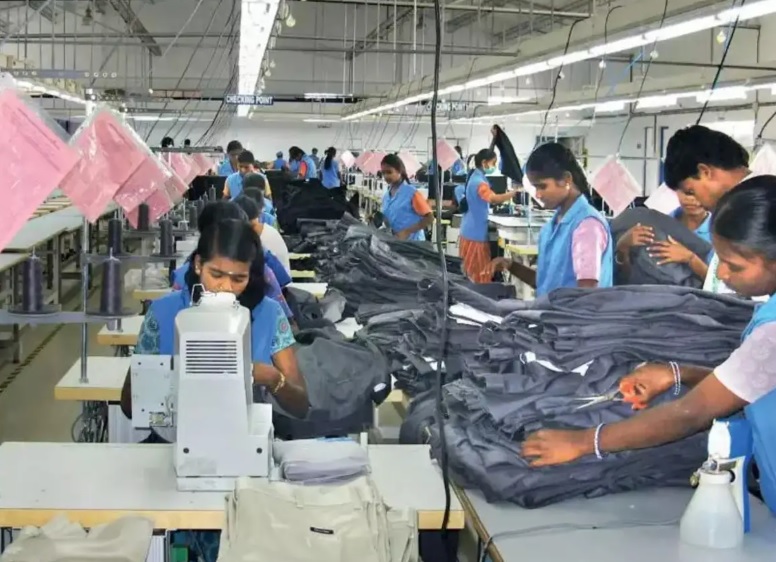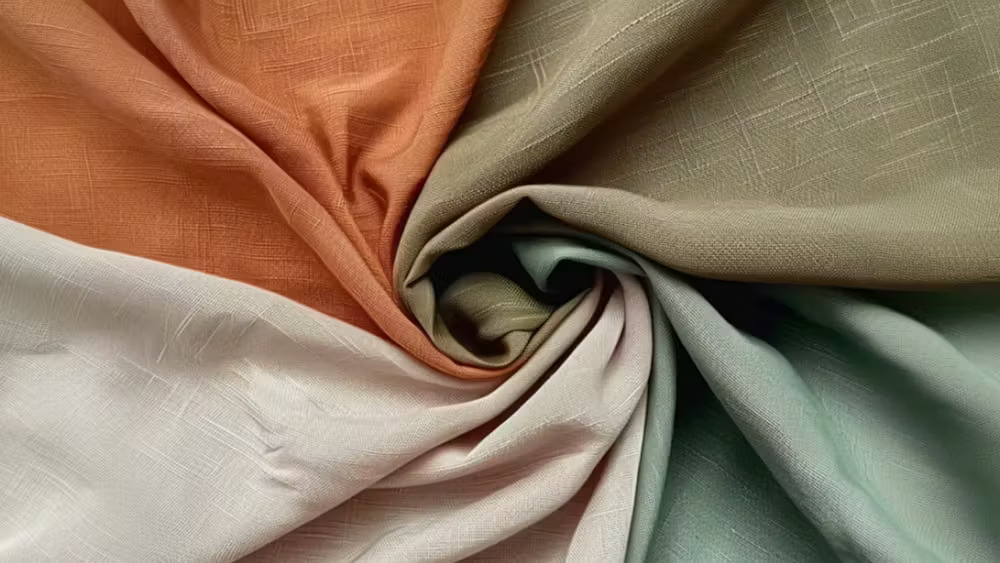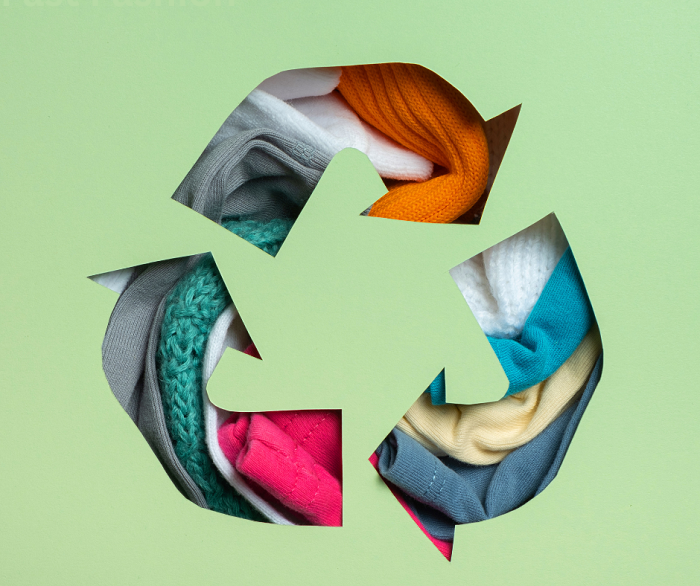FW
Textile traders in Surat want an anti-dumping duty imposed on fabrics imported from China and other countries. Compared to fabrics produced indigenously, imported fabrics are almost 100 per cent cheaper. In the last year, crores of meters of fabrics have been imported into the country and this has put the domestic manmade fabric sector in the country under threat.
Almost 50 per cent of manmade fabric sector in Surat has been observing a total shutdown over a month. The manufacturing of polyester fabric by powerloom weavers has stopped due to the weak demand for fabrics and onslaught of cheap imported fabrics from China. Surat’s textile traders say the benefits under the Technology Upgradation Fund Scheme (TUFS) should be extended to textile processors as well as for traders. At present, TUFS benefits are only for the power loom sector. Textile exporters also want a cargo service from Surat airport at the earliest. They say this will help them directly export the fabrics to various destinations, instead of diverting them from Mumbai and Delhi.
The annual polyester yarn consumption by powerloom units in Surat is pegged at 40,610 lakh kg and annual fabric production at 91,871 lakh meters.
The textile sector in Pakistan is under pressure. An unprecedented cotton crop failure caused a 35 per cent drop in production this year. For the first nine months, only 30 per cent of listed textile companies performed marginally well while 70 per cent showed closure or negative results.
Textile units say the input cost of cotton farmers should be reduced to encourage cotton production. Also, they want the funding provided by the textile industry for cotton research to be spent on cottonseed technology.
Another suggestion is that the whole textile value chain should be zero rated in the Budget as over 80 per cent of all fibers consumed are exported in one form or another. They say only the consumption of finished textile fabrics and garments for domestic consumption should be taxed. Also the import of synthetic specialty fibers including viscose and acrylic should be zero rated to undertake product and market diversification.
They also want a 15 per cent regulatory duty imposed on subsidised and imports of synthetic yarns and fabrics. Sales tax refunds should be released and sales and import duty on cotton imports should be withdrawn. They say if all this is not done Pakistan’s industry will not be able to match up to competitors like Bangladesh and Vietnam.
A Free Trade Agreement (FTA) may be signed between Thailand and Pakistan by the end of 2016. The FTA is expected to boost trade and particularly help Pakistan's textile sector because of the large demand for Pakistani textile products in Thailand.
Given the size of Pakistan's economy, Thailand considers it a promising country for business relations. Thailand wants to boost trade volumes between the two countries. The current volume of bilateral trade between Pakistan and Thailand is around a billion dollars. There exists scope to increase it to two billion dollars by improving connectivity between their private sectors.
Close cooperation between Pakistan and Thailand can be a win-win situation for both countries as they could facilitate each other in getting better market access in their respective regions. Pakistan could facilitate Thailand in promoting trade with south and central Asian countries whereas Thailand could help Pakistan in accessing the Asean region.
One way Pakistan and Thailand can promote bilateral trade is by holding single country exhibitions on a reciprocal basis. Pakistani products including textiles and readymade garments could find a good demand in Thailand. Strong linkages between the private sectors of both countries can increase trade volumes. Both countries are working to get closer in trade and economic relations.
Premium Textile Japan will take place from May 24 to 25, 2016. This is an exhibition of world class quality textiles. Premium Textile Japan will provide opportunities to participants to crack business deals with leading textile makers. The fair attracts buyers as well as suppliers. Premium Textile Japan will provide a platform to exhibitors to showcase their products and services keeping in mind their business targets and customer demand.
The show will exhibit a wide range of diversified as well as premium quality fabrics that are using superior raw materials, yarns and weaving or dyeing or finishing techniques. This is a business platform where top domestic and overseas buyers and suppliers converge. Most visitors comprise apparel designers and MDs who are decision-makers for fabric procurement, making the fair a real business-oriented negotiation salon. A productive and in-depth business related program coordinated by the organiser, such as business matching, also adds to the appeal of this key event.
This is the only premium textile salon that provides authentic brands and products. Japan is heavily dependent on fabric imports. Domestic textile producing regions are facing a decline. So the event provides an opportunity for garment makers to develop business ties with leading overseas textile makers.
"Bangladesh’s denim producers aimed at achieving the third largest position in the globe as denim exporting destination after the USA and Italy by the year 2021 when the country’s total RMG export is targeted to reach $50 billion landmark The denim producers, who are presently exporting $3.5 billion worth products to the international markets, are expecting to achieve $7 billion export target by 2021 by penetrating the $ 64.1 billion global trade, according to the exporters."
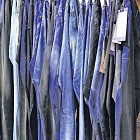
Bangladeshi denim will play an important role in raising country’s export earnings. The country has already become the second largest RMG exporter globally after China. Bangladesh’s denim producers aimed at achieving the third largest position in the globe as denim exporting destination after the USA and Italy by the year 2021 when the country’s total RMG export is targeted to reach $50 billion landmark.
The denim producers, who are presently exporting $3.5 billion worth products to the international markets, are expecting to achieve $7 billion export target by 2021 by penetrating the $ 64.1 billion global trade, according to the exporters. 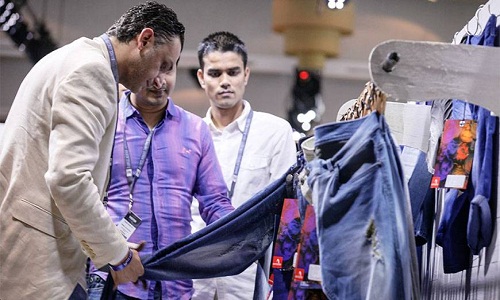
Mass production Sector insiders said that the local denim producers are
also increasing their production capacities as they are receiving higher orders from the foreign customers. Entrepreneurs here have already invested $834 million in 26 denim fabric mills and over 10 more new denim fabric mills are waiting for manufacturing to boost the country’s denim sector.
Many entrepreneurs including a number of largest business groups are willing to set up denim fabric plants across the country. According to the statistics of the Export Promotion Bureau (EPB), the country has witnessed an 8 per cent increase in denim jeans export in 2015.
As per denim market research report, the use of denim is on the rise worldwide and that is why its growth in Bangladesh would be 300 per cent in the next 10 years, while the global growth would be between 8 per cent and 10 per cent.
Industry insiders said, the industries are producing 360 million yards of fabric per year to meet 45 per cent to 50 per cent of the total annual demand.
For huge potentials, the largest business groups are coming to invest in the denim sector. But most of them are interested to produce basic denim only; which will create competition among them. The new investment in basic denim will not play vital role to achieve the targeted goal by 2021, experts opined.
Infrastructure hurdles Owners of the denim industries said they are now facing internal and external challenges including information of market research, products diversification and lack of innovative technical knowledge and non-availability of gas connection.
Said, Mostafiz Uddin, Managing Director of Denim Expert Bangladesh, Bangladesh is much known and favorite as a major source of denim products among the international retailers for its low prices.
He also said it is time to produce high quality denim fabrics and denim products, at the same time entrepreneurs would concentrate more on product diversification.
According to Anwar-ul-Alam Chowdhury Parvez, Managing Director of Evince Group, skilled manpower shortage, recruiting management and workers’ level team with adequate technical know-how, lack of gas connection and low pressure of gas supply are the main challenges for boosting the sector. The sector is growing in the country year by year, but the skilled manpower is not being developed comparing to the industry demand, he added.
Parvez also former BGMEA president said that the prices of denim are not increasing, rather it is decreasing due to global competition. Technical know-how is needed to check the hike in production cost to make the product competitive in the global market.
Abdus Salam Murshedy, President of the Exporters Association of Bangladesh (EAB), said locally-produced denim fabric meet about 50 per cent of the total export orders and the rest of the orders are met by imported fabrics.
He said some local denim factories are producing high quality fabrics. Earlier they used to produce per yard of fabrics by $2; now they are producing the same by $6.
According to the industry insiders, the country has 5.10 per cent share in the global apparel business, and it contributes 16 per cent to the country’s GDP.
Bangladesh is the second largest denim products exporting country, especially jeans to the EU, while it is holding the third largest position in the USA market.
Already, the industry achieved 15.53 per cent growth by exporting denim products worth euro 932.86 million to the EU in 2014. Among the global players in the $60 billion denim market, Bangladesh lags behind China, the US, Italy and some Latin American countries.
The country supplies denim products to major retailers and brands including H&M, Wrangler, S. Oliver, Hugo, Levi’s, Uniqlo, Nike, Tesco, Boss, Puma, Primark, JC Penney, C&A, Tommy Hilfiger, Inditex, Walmart, M&S, Calvin Klein, Diesel, Gap, and G-Star.
The denim market scenario in the US saw a down trend with the Men’s jeans imports taking a knock in the first quarter of 2016. Going down 4.4 per cent in absolute quantities, the men’s denim apparel carried forward the trend of the last few years of slump in demand. The first quarter of the year is normally the slowest of the four quarters. Though not too much can be predicted for the whole year but the starting of the year does not inspire.
However, women’s denim does inspire a bit as it does not go negative and keeps its head over water with a marginal 0.4 per cent growth. The second quarter would be critical as it would define the movement of the denim demand and the resultant imports from around the world – which constitutes more than 95 per cent of total denim consumed in US.
The denim apparel imports into US peaked in 2013 at about 522 million pcs but slowly declined and fell to 475 million pcs in 2015. It remains to be seen how this year will perform. The initial data is not encouraging.
J.C. Penney always has been the go-to place where Americans shopped for affordable clothing for their family. But the Texas-based department store chain announced that it must reduce its dependency on clothing and follow where the shoppers are spending their money: services and other products, including appliances.
Penney’s is waking up to the overall seismic shift in consumer spending that is started to wreak havoc on mall-based retailers, while part of the move has to do with being less reliant on Mother Nature. It comes as Penney reported an unexpected drop in sales for the first quarter, joining a chorus of major department stores including Macy’s, Nordstrom and Kohl’s that reported weak first-quarter sales results.
The latest government figures on retail sales for April underscored that shift. Gains were fueled by online spending and automobile purchases.
Meanwhile, Marvin Ellison, CEO of J.C. Penney told investors that it’s conducting a detailed review of its customers’ current and future shopping habits and will start to shift its merchandising mix accordingly.
The new approach comes as J.C. Penney Co. still is clawing its way back after a catastrophic reinvention plan under former CEO Ron Johnson sent sales and profits into a free fall in 2012 and 2013. Business had stabilized, although it has yet to fully recover.
The European Committee of Textile Machinery Manufacturers (CEMATEX) has announced that it has awarded a contract to a new company, ITMA Services, to organise its ITMA 2019 show.
ITMA Services NV is headquartered in Brussels and has a subsidiary office, ITMA Services Pte, in Singapore.
Sylvia Phua has been appointed as Managing Director of ITMA Services Pte Ltd. Phua has previously been involved in organising ITMA 2011 in Barcelona, ITMA 2015 in Milan, as well as the ITMA ASIA 2001 and 2005 shows in Singapore. She also collaborated on the ITMA ASIA + CITME series of shows in Shanghai from 2008 through 2014.
ITMA 2019 will be held from 20 to 26 June 2019 in Barcelona, Spain.
CEMATEX comprises national textile machinery associations from Belgium, France, Germany, Italy, Netherlands, Spain, Sweden, Switzerland and the United Kingdom. It is the owner of ITMA and ITMA ASIA. Considered the 'Olympics' of textile machinery exhibitions, ITMA has a 65-year history of displaying the latest in machinery and software for every single work process of textile and garment making. It is held every four years in Europe.
The All Pakistan Textile Mills Association (APTMA) Chairman Tariq Saud has urged the Pakistan government to wake up from a slumbering mode and save the textile industry in order to save economic growth of the country.
Saud said the availability of 24/7 energy to the industry would only be useful when viability of the industry is restored. He condemned the indifferent attitude towards prevailing state of affairs of the textile industry, which is a mainstay of Pakistan economy with backward and forward linkages, biggest employer and the highest export earner in the country. He further said that if this unfriendly attitude of the government will be continued then the industry will move towards the position of no return.
According to the APTMA Chairman, the first nine months financials of the listed companies of the textile sector suggest that the industry is heavily under pressure. He added that only 30 per cent of the listed companies of textile industry marginally performing while remaining 70 per cent companies showing closure or negative results.
Financials of the non-listed textile companies are even worst and the exports of the sector are showing negative trends over the last two years, which the APTMA has been putting on record time and again. Unprecedented cotton crop failure caused 35 per cent drop in production this year.
The Zero Discharge of Hazardous Chemicals (ZDHC) Foundation, which was formed with the target of eliminating the use of hazardous chemicals in the textile and footwear industry by 2020, has released its 2015 annual report.
The ZDHC transitioned to foundation status in 2015, making it a legal entity, appointed its first board of directors and executive director and created a small team spread between Europe and the US.
The Foundation added a Wastewater Quality tool to its programme, released the Chemical Management System (CMS) Guidance manual to help brands, retailers and suppliers develop their own CMS and published version 1.1 of its Manufacturing Restricted Substances List (MRSL), expanding the list to include leather.
ZDHC Foundation has six main priorities for 2016: updating and promoting the MRSL, finalising the audit conformance process, researching solutions to eliminating hazardous chemicals, developing Wastewater Quality Guidance, creating training for standardised chemistry management data and embedding its tools in the supply chain







